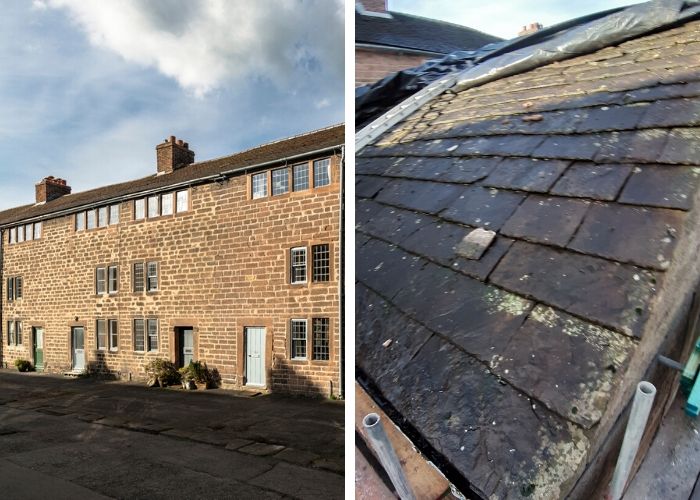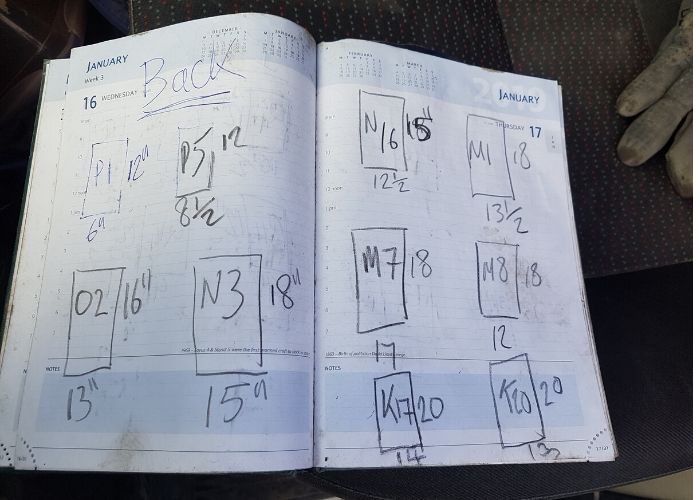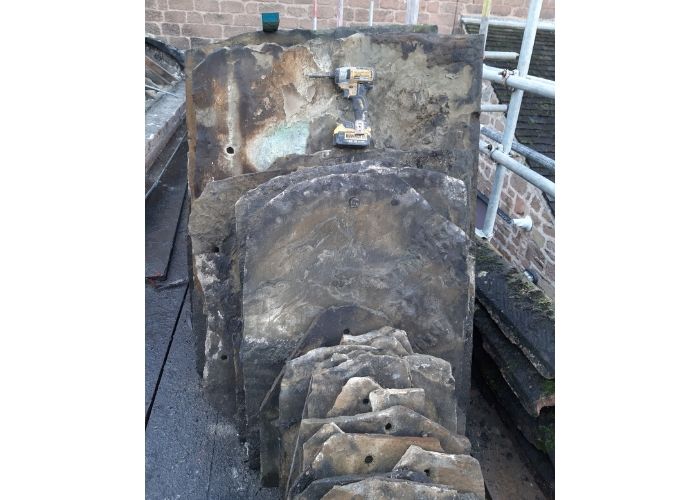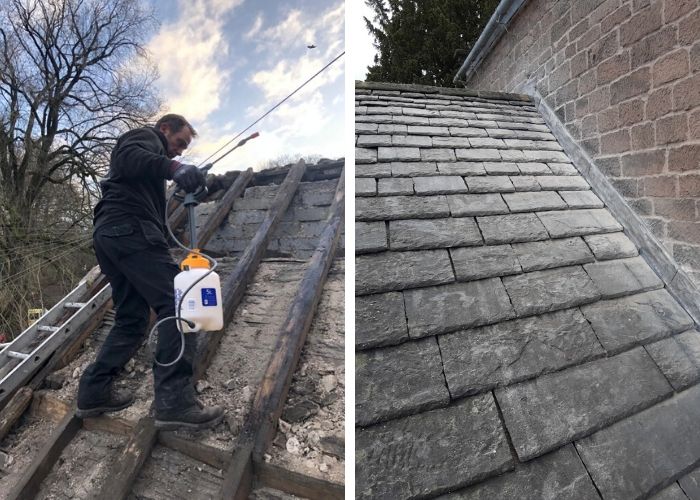During routine maintenance checks of the loft spaces at our Landmark on North Street in Cromford in Derbyshire, it became apparent the roof covering was starting to fail. The stone slates were starting to slip as the oak pegs holding them in place were deteriorating allowing moisture into the building. Temporary repairs were carried out immediately to stop the slates from slipping out completely. This was done by inserting copper tingles under the slate and hooking over the nearest slate batten. A close inspection followed and it was discovered that the slate battens and some of the rafters were in a poor state and needed replacing.

An application for listed building consent was submitted which outlined our plan to strip the roof completely, repair the rafters and add a breathable membrane before re battening and covering with the original stone slate. The addition of the breathable membrane was something the roof had never benefited from, and added another level of waterproofing. This application was approved and works began on the 24 January 2020.
The first task for the contractor was to draw up a detailed map of the roof, recording exactly the position of the slates prior to removal. This would be helpful when re-covering the roof as each slate would go back in its original position so there would not be any visual change. The slates on this type of roof diminish in size as they go up the roof with the bottom row being the largest.

On this roof some of the lower slates are over 1m square and as part of the recording process any slates that were found to be broken were set aside and their exact size and very importantly their thickness was noted so replacements could be sourced from specialist roofing reclamation yard.

The decline of the stone slate roofing industry has led to the loss of expertise in both roofers and suppliers but we were lucky to work with Bradshaw and Green Roofing who understood our requirements and had a very good eye for detail. They worked for three weeks carefully repairing the roof structure and adding new rafters alongside older more damaged ones but never taking any old the original timbers away. This shows a patina of time/repair for anyone else repairing the roof in the future. The whole structure was treated with wood preservative as part of the repair.

Now that the structure was repaired the slate could be put back and due to some very clever stacking each slate found its way back to its original position, the ridge tiles were returned and new lead work was added to give the roof another 100 years of life. Looking back on the roof from the ground it looks as if nothing was done which is always a good sign of a very well crafted and successful restoration repair.
Explore North Street